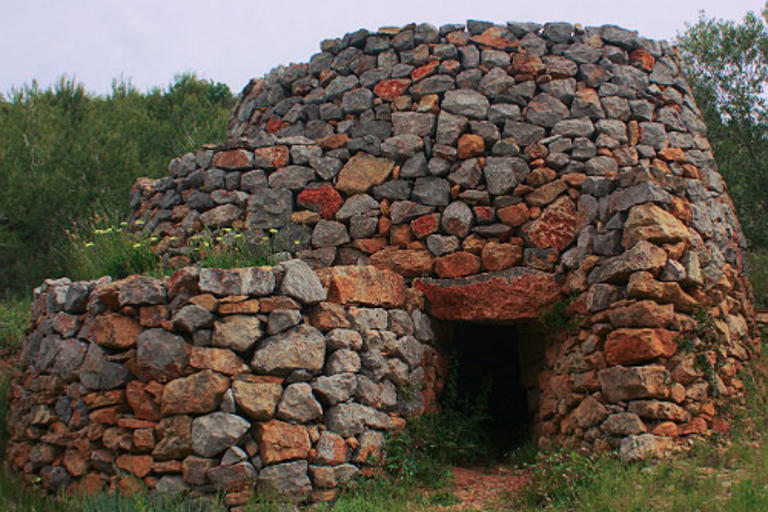
Introduction
Dry-stone huts and aixarts (the name given to the walls that are the result of clearing the land of stones to plant crops) are good examples of how people have made the most of the resources offered by the Montgrí, as are the lime furnaces we saw earlier.
The particular hut is a very large hut which was recently rebuilt. It has a circular floor plan and a stepped structure.
This type of hut was the most difficult to build and the help of an expert hut builder was often needed. They are very sturdy. They were often built far from towns and villages and saved farmers and shepherds from having to go back and forth to the village, or taking small items with them.
Their role was to provide protection from bad weather, from the sunniest periods in the summer and to provide storage for hand tools and food and water.
Around the hut there are various remains of aixarts – fields enclosed by stone walls – and olive trees which are evidence of the old agricultural exploitation of the plains.